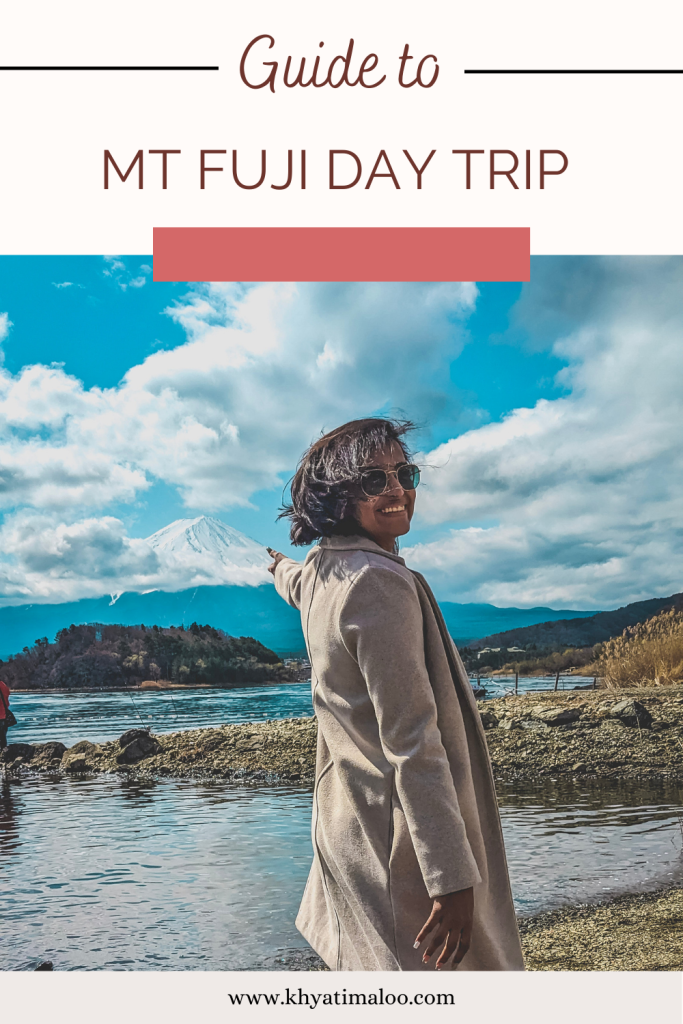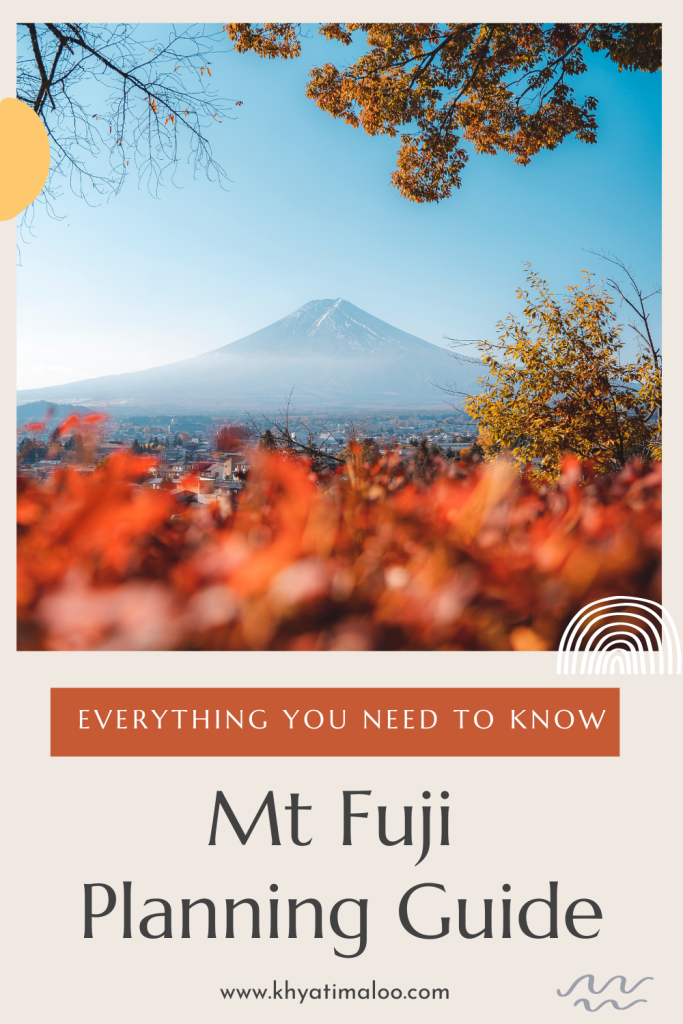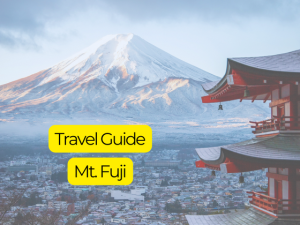
Mt Fuji Day Trip Guide 2025
Estimated reading time: 17 minutes
I’m going to take you on a journey to one of the most iconic destinations in Japan – Mt. Fuji! By the end of it, you’ll be able to plan your trip to Mt Fuji. Or book the best available tour.
Mt Fuji is the highest peak in Japan at 3,776 meters tall. It is an active volcano that last erupted in 1707. But don’t let that scare you off! It’s a popular tourist destination and has plenty of safe and fun activities for everyone.
I’m excited to share everything I know about visiting Mt. Fuji, from planning your trip to exploring the area. I’ll give you the best times to visit, transportation options from Tokyo, and what to expect when you arrive. I’ll share my own experiences and recommendations like my favourite hiking trails, sightseeing spots, and food and drink options.
Let’s dive into the nitty-gritty of planning your Mt. Fuji day trip! Here are the key things you need to consider before embarking on your adventure.
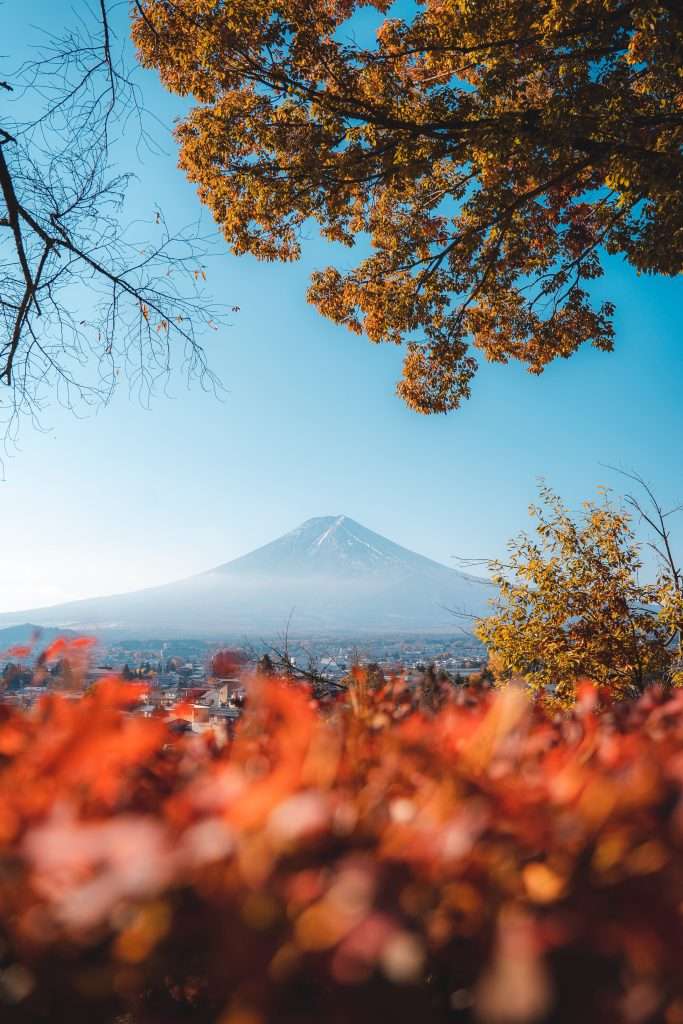
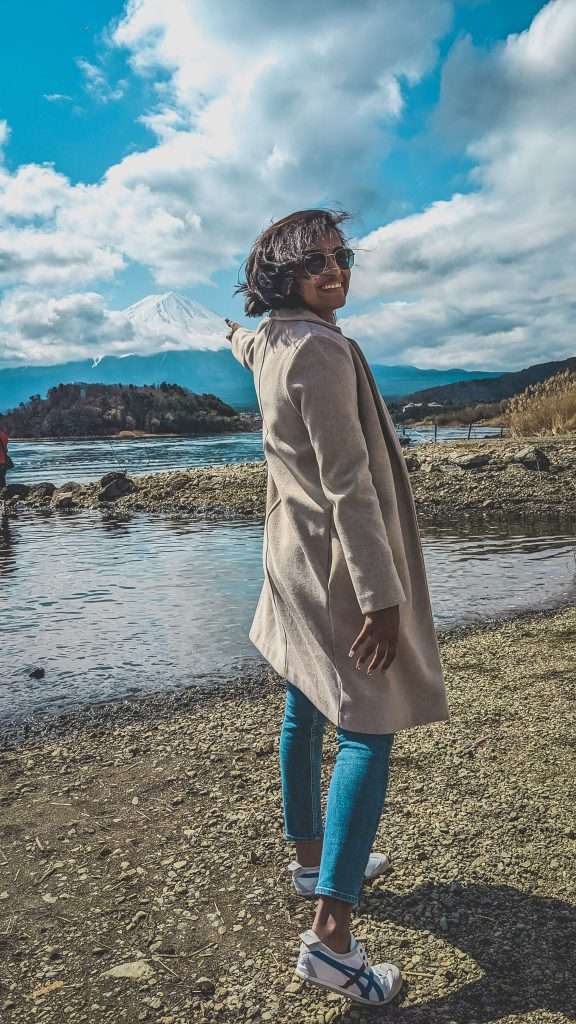
Best Seasons & Visibility for Mt. Fuji
The best time to visit Mt. Fuji is during the summer months of July and August. When the weather is mild, and the skies are clear. Remember that this is also the busiest time of year, so plan accordingly. If you’re looking for a quieter experience, consider visiting during the spring or fall months. Mt. Fuji with the backdrop of cherry blossom or fall foliage is breathtaking! The climbing season for Mt. Fuji is from early July to early September.
| Season | What to Expect |
|---|
| Winter (Dec–Feb) | The jackpot season. Crisp, dry air means the clearest visibility. Snow caps Fuji in perfect white, making it a photographer’s dream. |
| Spring (Mar–Apr) | Picture this: pink cherry blossoms in the foreground, Fuji rising in the background. Crowds are heavier, but the photos are iconic. |
| Autumn (Oct–Nov) | Autumn foliage frames Fuji in fiery reds and golds. Cooler weather also boosts your chances of seeing the mountain clearly. |
| Summer (Jun–Aug) | Honestly? Not the best. Humidity and haze often swallow the mountain whole. You might catch a glimpse, but don’t bank on it. |
Pro tip: Mt. Fuji visibility is highly weather-dependent. Even in winter, the mountain can vanish behind clouds for days. Check a local weather app before you head out. Or, as one traveler on Reddit put it:
“It’s worth it if it’s a cloudless day.”
So if you wake up in Tokyo to clear blue skies—drop everything and go. That’s when a Fuji day trip really pays off.
Guided Tours vs DIY – Pros & Cons
One of the biggest decisions when planning a Mt. Fuji day trip from Tokyo is whether to go solo or book a guided tour. Both options work—just depends on your travel style.
Guided Tours
Pros:
- Zero planning stress—transport, tickets, and schedules are all sorted.
- You’ll hit the major highlights like Chureito Pagoda, Oishi Park, and often even Oshino Hakkai, without worrying about connections.
- English-speaking guides add context (history, culture, little anecdotes you might otherwise miss).
- Perfect if you’re short on time or traveling with family.
Cons:
- Less flexibility—you’ll be on a set schedule with limited free time.
- Bigger groups can sometimes feel rushed or crowded.
- Usually pricier—expect around ¥9,000–12,000 per person for a full-day bus tour.
Best for: First-time visitors to Japan, families, or anyone who doesn’t want the hassle of planning.
DIY (Do It Yourself)
Pros:
- Full freedom to design your day. Want to linger an hour longer at Oishi Park? No problem.
- Can be cheaper if you stick to buses and budget meals. Round-trip bus tickets from Tokyo to Kawaguchiko cost around ¥3,500, plus ¥1,500 for the Retro Bus Pass.
- You’ll get a more personal, less touristy vibe if you explore at your own pace.
Cons:
- More moving parts—trains, buses, transfers. If you miss one, your timing gets thrown off.
- Language barrier in smaller towns can make navigation tricky.
- You’re on your own if the weather turns bad and Fuji stays hidden.
Best for: Independent travelers, photographers who need flexibility, and repeat visitors who already know Tokyo’s transport system.
My take? If it’s your very first trip and you’re nervous about Japanese transport, book a guided tour—you’ll maximize your day without stressing. But if you love slow travel and the thrill of finding your own way, DIY wins every time.
How to Get to Mt. Fuji from Tokyo
There are a few options to do a day trip to Mt. Fuji from Tokyo. The most convenient and cost-effective option is to take a train from Tokyo to either Shin-Fuji or Fujinomiya station. And then transfer to a bus that will take you directly to the mountain.
If you’re planning to use public transportation to visit Mt. Fuji, here’s a step-by-step guide to help you get there:
- First, take the Tokaido Shinkansen from Tokyo Station to either Shin-Fuji or Mishima Station. This journey takes around 45 minutes and costs approximately ¥6,500 ($60 USD) one way. Note that if you have a Japan Rail Pass, you can use it to cover the cost of the Shinkansen.
- At Shin-Fuji or Mishima Station, transfer to the Fujikyu bus that will take you to Mt. Fuji’s 5th Station, which is the starting point for many hiking trails. The bus journey takes approximately 2 hours and costs ¥2,700 ($25 USD) one way. Note that the JR pass does not cover the bus fare.
- If you’re not planning to hike and simply want to enjoy the views from the base of the mountain, you can take a different bus from Kawaguchiko Station to the Fuji Subaru Line 5th Station. This journey takes around 50 minutes and costs ¥1,570 ($15 USD) one way. JR pass does not cover the bus fare.
- When you arrive at the 5th Station, you can purchase tickets for the various attractions and activities on offer, such as a cable car ride or a visit to the Mt. Fuji Museum. Prices vary depending on the activity.
- When you’re ready to return to Tokyo, simply take the bus back to Shin-Fuji or Mishima Station. And then take the Shinkansen back to Tokyo. Remember to factor in enough time to catch your train and bus connections, as well as any time you plan to spend at Mt. Fuji.
Alternatively, you can rent a car and drive there, but keep in mind that parking can be challenging. The roads can be narrow and winding.
Mt. Fuji Tours
From guided hikes to helicopter tours, there are loads of options. The key is to choose a tour that fits your interests, budget, and schedule. Do you want a leisurely experience with plenty of sightseeing stops? Or are you looking for a more challenging hike with stunning views?
There’s a brilliant one available on GetYourGuide. This tour packs in all the must-see sights, including Kawaguchiko Oishi Park. Where you can snap that perfect Instagram shot with Mount Fuji in the background. And let’s not forget about the Arakura Sengen Shrine, the holy grail of photo spots. The tour also takes you to Oshino Hakkai, which comprises eight beautiful ponds created by the melting snow on the top of Mt. Fuji. It’s the perfect spot to unwind and take in the stunning natural beauty of Japan.
Another enjoyable day trip is via Hakone, book this day tour to Mt. Fuji. It is a much longer journey but it includes the Hakone ropeway and a cruise on Lake Ashi. So take a pick on what suits your preference.
A DIY Day Trip to Mt. Fuji from Tokyo
If you’ve ever wondered “Can I really see Mt. Fuji in just one day from Tokyo?” the answer is yes, absolutely! Here’s a realistic, time-stamped plan that balances the must-see highlights with a few hidden gems (and even a shopping stop if you’ve got energy left).
6:30 AM – Depart Tokyo
Kick things off bright and early. From Shinjuku Station, you can hop on the Highway Express Bus to Kawaguchiko. It’s comfy, direct, and affordable around ¥1,750 one way, and it takes about 1 hour 45 minutes.
If you’re a train person, the JR Chuo Line Limited Express will also get you there (with a change at Otsuki for the Fujikyu Railway). This option is faster but pricier around ¥4,000–4,500 one way.
Pro tip: Book your bus tickets online the day before. They sell out quickly, especially in peak seasons like spring cherry blossoms or autumn foliage.
8:15 AM – Arrive at Kawaguchiko
First stop? Head straight to the ticket counter and grab the Kawaguchiko Sightseeing Retro Bus Pass. At around ¥1,500 for unlimited rides, this little pass is your golden ticket to bouncing between Fuji’s best photo spots without worrying about individual fares.
8:30 – 9:30 AM – Chureito Pagoda
This is the money shot. Imagine Mt. Fuji rising behind a five-story red pagoda, with either cherry blossoms in spring or blazing foliage in autumn framing your view. The climb is about 400 steps (take your time, it’s worth it).
If you’re lucky with the weather, the morning light here is magic. And yes, this is where you’ll get that iconic photo that screams “Mt. Fuji day trip from Tokyo.”
10:30 – 11:30 AM – Oishi Park
Jump back on the Retro Bus and head for Oishi Park, a lakeside stretch bursting with flowers in spring and summer. Winter brings those clear, blue-sky days when Fuji looks like it’s been painted onto the horizon.
Stroll, sip a coffee from the local café, and soak up those postcard-perfect reflections of Fuji in Lake Kawaguchiko.
12:00 PM – Lunch Break
You’ve earned it. Options range from casual curry houses serving Mt. Fuji-shaped rice mounds (yes, really!) to cozy cafés with lake views. Expect to pay around ¥1,200–2,000 per person for a filling local meal.
Popular picks: Hōtō noodle soup (a regional specialty with thick, chewy noodles) or seasonal bento boxes with fresh veggies and tofu.
1:30 PM – Scenic Stop at Tenjo-yama Ropeway or Oshino Hakkai
Now’s the time to decide what where else would you like to go for some epic views of Mount Fuji.
- Tenjo-yama Ropeway (Mt. Kachi Kachi Ropeway): A short cable car ride (~¥900 round trip) that gives you sweeping lake and Fuji views.
- Oshino Hakkai Village: A traditional village with eight crystal-clear ponds fed by Mt. Fuji’s snowmelt. Entry is free, though you might want to budget ¥500–1,000 for street food snacks like grilled mochi or green tea ice cream.
2:30 PM – Gotemba Premium Outlets
Shopping fans, rejoice. If you’ve still got energy, head to Gotemba Premium Outlets, about an hour away by bus. With over 200 stores (think Nike, Coach, Gucci), it’s one of Japan’s biggest outlet malls—and yes, Fuji often photobombs your shopping spree.
The Fujikyu bus from Kawaguchiko to Gotemba is around ¥1,540.
4:00 – 5:00 PM – Return to Tokyo
Time to head back. Buses run regularly from both Kawaguchiko and Gotemba to Tokyo stations like Shinjuku or Shibuya. Again, fares are around ¥1,750–2,000.
Watch out for traffic. If you’re traveling on a weekend or holiday, the return can take longer—sometimes double the time. To play it safe, aim for an earlier bus or opt for the train.
Things to do at Mt. Fuji
If you’re not convinced with my itinerary for day trip to Mt. Fuji. Check out some of the top things to do at Mt. Fuji and, make your own day trip!
Here are my top 3 things to do around the Mt. Fuji day trip.
Fuji Five Lakes
The Fuji Five Lakes (Fujigoko) are a group of five picturesque lakes located at the northern base of Mount Fuji. The five lakes are Lake Kawaguchi, Lake Saiko, Lake Yamanaka, Lake Shoji, and Lake Motosu. And they make for a great option when you are planning a day trip to Mt Fuji.
Each lake has its own unique charm and activities to offer. Kawaguchi is the most developed and popular lake, with many hotels and restaurants, as well as a variety of water sports, such as boating and fishing. Saiko is known for its quiet and serene atmosphere, with great hiking trails around the lake. Yamanaka is the largest of the five lakes and is popular for water sports as well as scenic drives. Shoji is the smallest of the five lakes and is known for its clear water and fishing. Motosu is the deepest and clearest of the lakes and offers opportunities for fishing, boating, and camping.
One of the main draws of the Fuji Five Lakes is their stunning views of Mount Fuji. The lakes offer some of the best spots for photographing the mountain, and many visitors come to the area specifically to capture that perfect shot.
In addition to water activities, there are also many hiking trails in the area. The most popular hike is the trail around Lake Kawaguchi, which takes about three hours to complete and offers beautiful views of the lake and Mt. Fuji. There are also many other trails around the lakes, ranging in difficulty from easy to challenging.
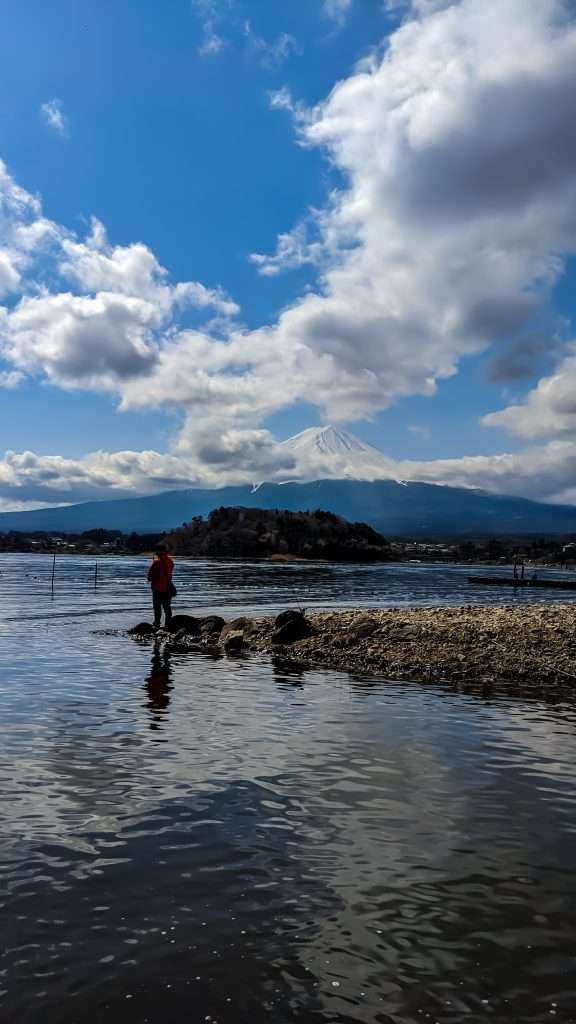
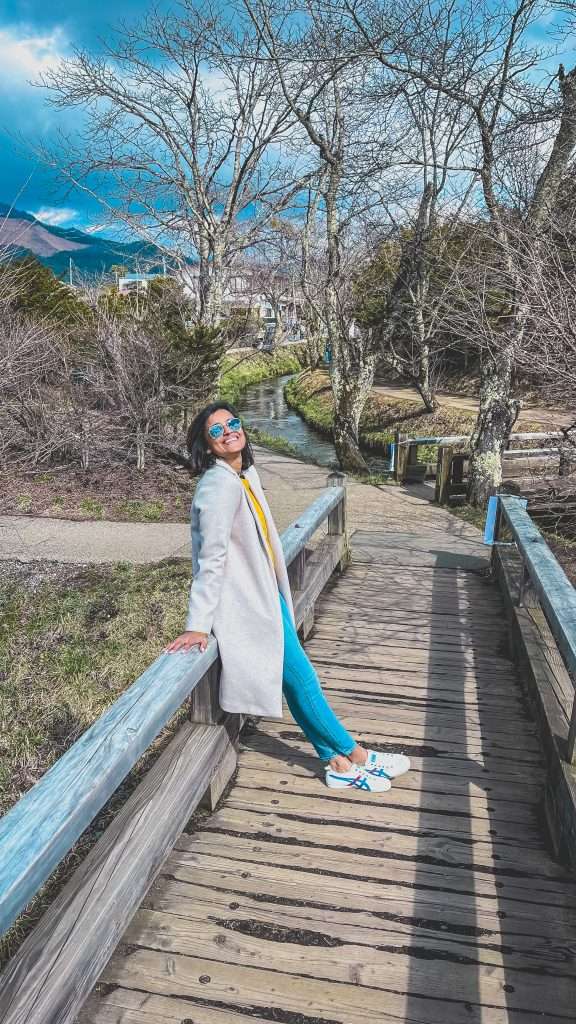
Chureito Pagoda
Chureito Pagoda is a famous landmark located in the town of Fujiyoshida, at the base of Mt. Fuji. It is a five-storied pagoda that stands on a hill overlooking the town and offers one of the most iconic views of Mt. Fuji in Japan.
The pagoda was built in 1963 as a peace memorial for the victims of the Second World War. It is located within the Arakura Sengen Shrine, which is known for its beautiful cherry blossom trees in the spring season. Visitors can climb up a steep set of stairs to reach the pagoda, and the climb is worth it for the breathtaking view of Mt. Fuji from the top.
The best time to visit Chureito Pagoda is during the cherry blossom season in early April or during the autumn foliage season in late November. During these times, the view of the pagoda and Mt. Fuji surrounded by the pink and orange hues of the blossoms and leaves is simply stunning.
Chureito Pagoda is also a popular spot for photographers, and many visitors come here to capture that perfect shot of the pagoda and Mt. Fuji. It’s important to note that the pagoda is a popular destination, so it can get quite crowded during peak season. It’s best to visit early in the morning or later in the day to avoid the crowds.
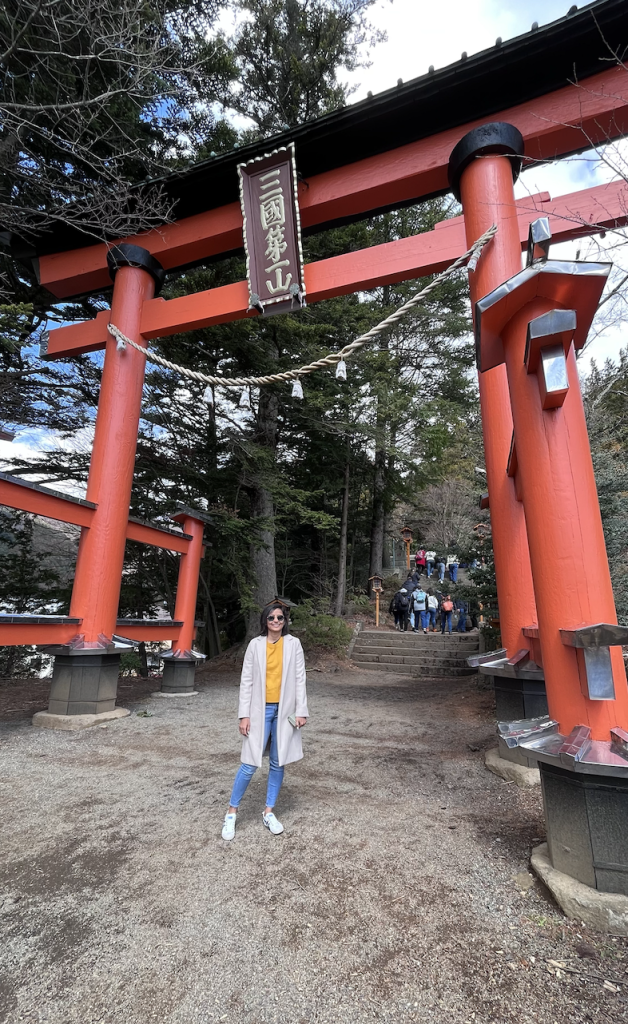
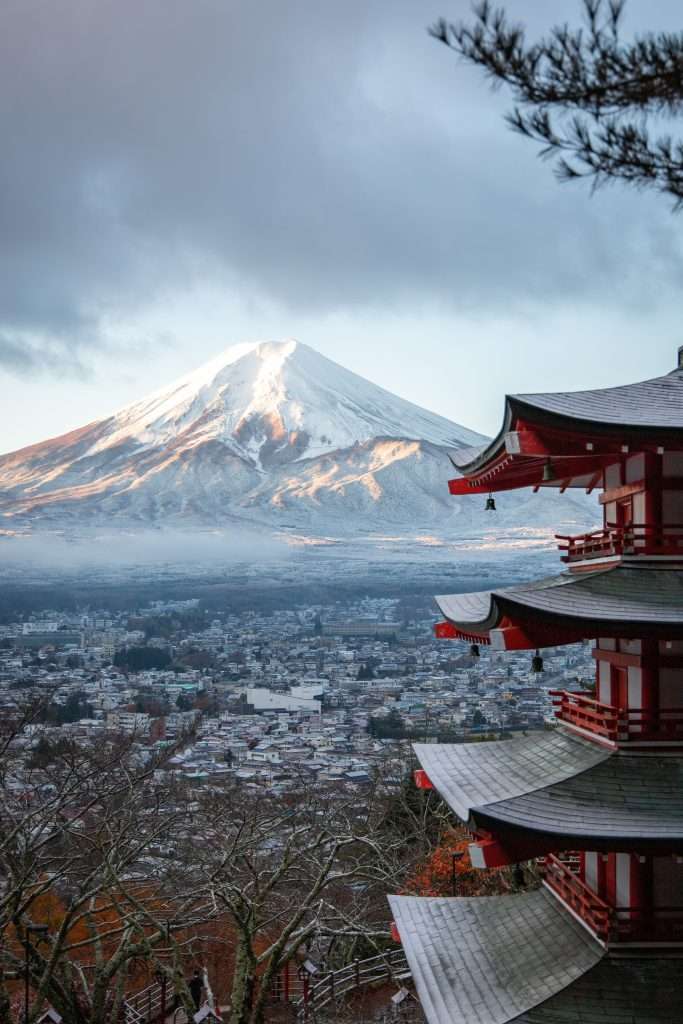
Oshino Hakkai
Oshino Hakkai is a set of eight beautiful ponds located at the foot of Mt. Fuji in the village of Oshino. The ponds are fed by melting snow from Mt. Fuji and are known for their crystal-clear water that reflects the surrounding nature and the stunning Mt. Fuji in the background.
The area surrounding the ponds is also known for its beautiful cherry blossom trees in the spring season and colourful foliage in the autumn season. Visitors can enjoy strolling around the ponds and taking in the beautiful scenery. The ponds are also home to a variety of fish and aquatic plants, making them a popular spot for nature lovers.
Aside from the ponds, there are also traditional Japanese houses and shops in the area that offer local souvenirs, snacks, and meals. Visitors can try some local delicacies such as soba noodles made from buckwheat flour or grilled ayu fish, a speciality of the region.
Oshino Hakkai is a popular destination for tourists, so it can get crowded during peak season. However, the ponds and the surrounding nature are well-maintained and offer a serene and peaceful atmosphere, making it a great spot to escape the hustle and bustle of the city.
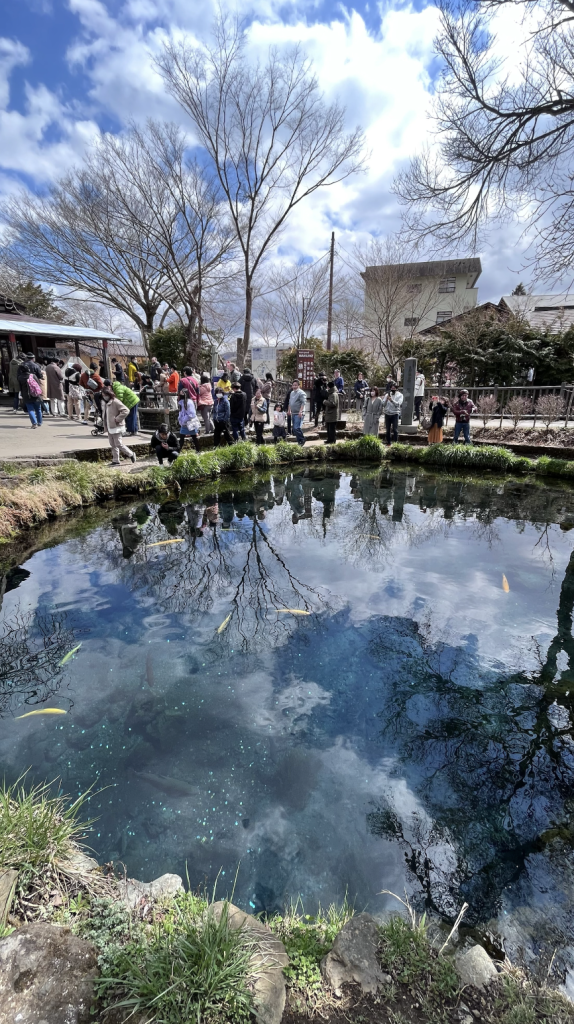

Vegetarian Food recommendations around Mt. Fuji
For vegetarians visiting the Mt. Fuji area, there are a few food and drink options available that are worth trying out. Here are some recommendations:
- Houtou – Houtou is a hearty noodle dish that originates from the Yamanashi Prefecture, which is near Mt. Fuji. The dish consists of thick udon noodles served in a rich miso-based soup that is flavored with vegetables such as pumpkin, onion, and carrot. The dish can be easily made vegetarian by omitting meat-based ingredients.
- Tempura – Tempura is a popular Japanese dish that involves deep-frying vegetables or seafood in a light batter. Many restaurants in the Mt. Fuji area serve vegetarian tempura options that include a variety of vegetables such as pumpkin, sweet potato, and green beans.
- Tofu dishes – Tofu is a staple ingredient in Japanese cuisine and is widely available in the Mt. Fuji area. Visitors can try dishes such as yudofu, which is tofu simmered in a light broth, or agedashi tofu, which is deep-fried tofu served in a savoury sauce.
- Soba noodles – Soba noodles are thin noodles made from buckwheat flour and are commonly served in hot or cold broth. Vegetarian options are available that feature a variety of vegetables and tofu.
- Dango – One of my favourite sweets to eat while in Japan. Try these rice cakes with either red bean paste or sweet soy sauce glaze. And do try the special purple-coloured sweet potato dango if you visit lake Kawagushigo. I didn’t find them anywhere else and they were extremely delicious.
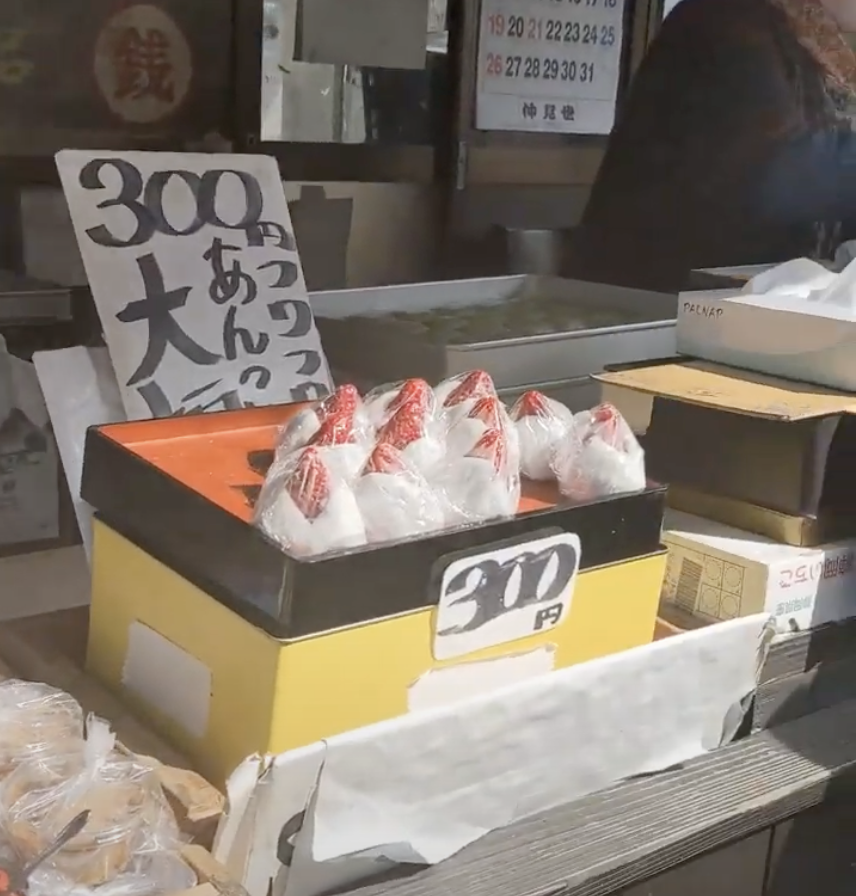
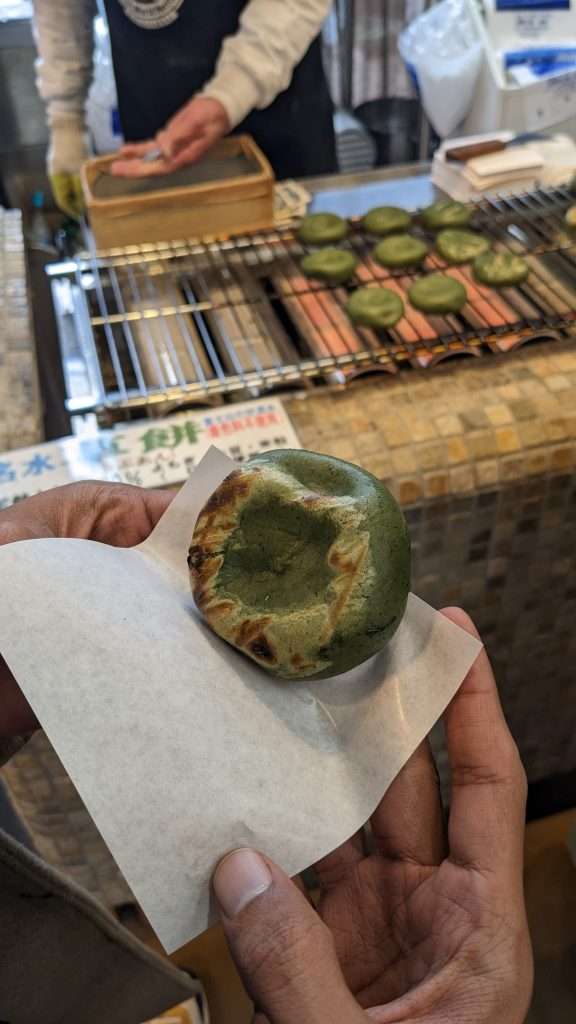
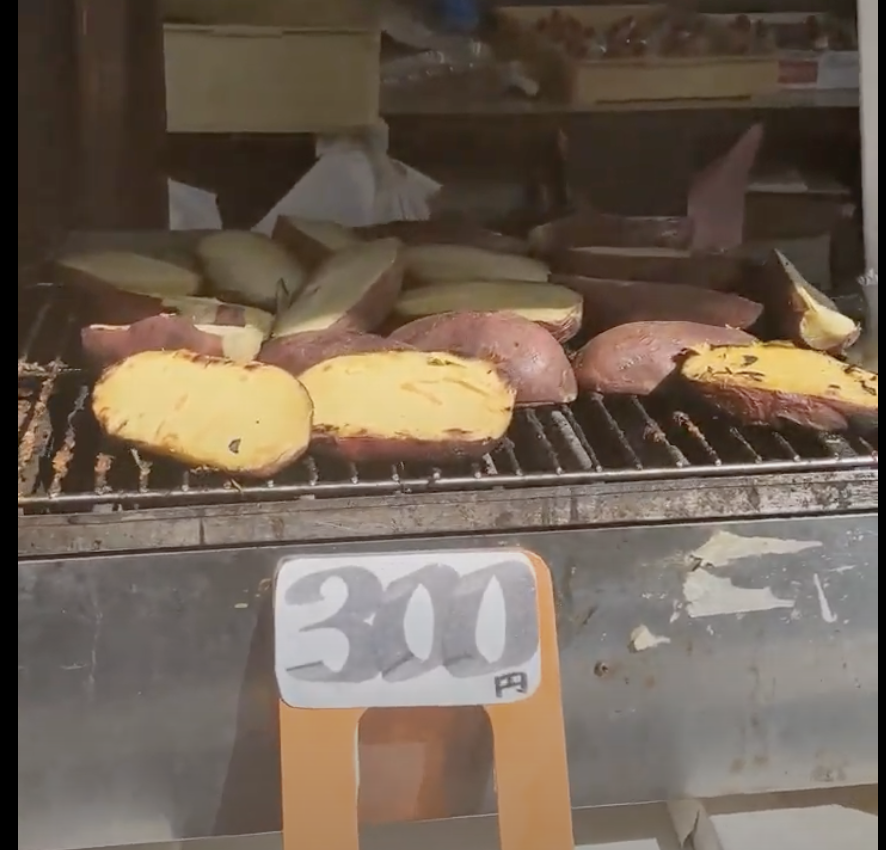
For drinks, try local green tea or sake, a traditional Japanese rice wine. Many restaurants and cafes in the Mt. Fuji area offer vegetarian-friendly or vegan options. I’ll soon write detailed guides on being a vegan or vegetarian in Japan.
Pin this Guide to Mt Fuji Day Trip
Many would simply assume it’s just a big volcano and not visit Fuji San. If you are one of them, I urge you to change that thought. Mt. Fuji isn’t just a geographical wonder. It is a cultural wonder. My visit to Mt. Fuji stirred many creative ideas. Not sure if it was the perfect symmetry or the commanding presence that ignited my imagination. But, it’s not hard to see why so many great minds throughout history have been captivated by its beauty. From the flowing lines of Hokusai’s woodblock prints to the contemplative haiku of Basho, Mt. Fuji has been a muse for generations of artists.
Hope my Mt Fuji day trip guide helps you plan your trip and witness the marvels of this natural wonder.

